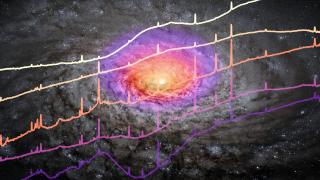Bibcode
Horne, Keith; De Rosa, G.; Peterson, B. M.; Barth, A. J.; Ely, J.; Fausnaugh, M. M.; Kriss, G. A.; Pei, L.; Bentz, M. C.; Cackett, E. M.; Edelson, R.; Eracleous, M.; Goad, M. R.; Grier, C. J.; Kaastra, J.; Kochanek, C. S.; Krongold, Y.; Mathur, S.; Netzer, H.; Proga, D.; Tejos, N.; Vestergaard, M.; Villforth, C.; Adams, S. M.; Anderson, M. D.; Arévalo, P.; Beatty, T. G.; Bennert, V. N.; Bigley, A.; Bisogni, S.; Borman, G. A.; Boroson, T. A.; Bottorff, M. C.; Brandt, W. N.; Breeveld, A. A.; Brotherton, M.; Brown, J. E.; Brown, J. S.; Canalizo, G.; Carini, M. T.; Clubb, K. I.; Comerford, J. M.; Corsini, E. M.; Crenshaw, D. M.; Croft, S.; Croxall, K. V.; Dalla Bontà, E.; Deason, A. J.; Dehghanian, M.; De Lorenzo-Cáceres, A.; Denney, K. D.; Dietrich, M.; Done, C.; Efimova, N. V.; Evans, P. A.; Ferland, G. J.; Filippenko, A. V.; Flatland, K.; Fox, O. D.; Gardner, E.; Gates, E. L.; Gehrels, N.; Geier, S.; Gelbord, J. M.; Gonzalez, L.; Gorjian, V.; Greene, J. E.; Grupe, D.; Gupta, A.; Hall, P. B.; Henderson, C. B.; Hicks, S.; Holmbeck, E.; Holoien, T. W. -S.; Hutchison, T.; Im, M.; Jensen, J. J.; Johnson, C. A.; Joner, M. D.; Jones, J.; Kaspi, S.; Kelly, P. L.; Kennea, J. A.; Kim, M.; Kim, S.; Kim, S. C.; King, A.; Klimanov, S. A.; Korista, K. T.; Lau, M. W.; Lee, J. C.; Leonard, D. C.; Li, Miao; Lira, P.; Lochhaas, C.; Ma, Zhiyuan; MacInnis, F.; Malkan, M. A.; Manne-Nicholas, E. R.; Mauerhan, J. C. et al.
Referencia bibliográfica
The Astrophysical Journal
Fecha de publicación:
2
2021
Revista
Número de citas
71
Número de citas referidas
60
Descripción
In this contribution, we achieve the primary goal of the active galactic nucleus (AGN) STORM campaign by recovering velocity-delay maps for the prominent broad emission lines (Lyα, C IV, He II, and Hβ) in the spectrum of NGC 5548. These are the most detailed velocity-delay maps ever obtained for an AGN, providing unprecedented information on the geometry, ionization structure, and kinematics of the broad-line region. Virial envelopes enclosing the emission-line responses show that the reverberating gas is bound to the black hole. A stratified ionization structure is evident. The He II response inside 5-10 lt-day has a broad single-peaked velocity profile. The Lyα, C IV, and Hβ responses extend from inside 2 to outside 20 lt-day, with double peaks at ±2500 km s-1 in the 10-20 lt-day delay range. An incomplete ellipse in the velocity-delay plane is evident in Hβ. We interpret the maps in terms of a Keplerian disk with a well-defined outer rim at R = 20 lt-day. The far-side response is weaker than that from the near side. The line-center delay $\tau =(R/c)(1-\sin i)\approx 5$ days gives the inclination i ≍ 45°. The inferred black hole mass is MBH ≍ 7 × 107 M⊙. In addition to reverberations, the fit residuals confirm that emission-line fluxes are depressed during the "BLR Holiday" identified in previous work. Moreover, a helical "Barber-Pole" pattern, with stripes moving from red to blue across the C IV and Lyα line profiles, suggests azimuthal structure rotating with a 2 yr period that may represent precession or orbital motion of inner-disk structures casting shadows on the emission-line region farther out.
Proyectos relacionados

Actividad Nuclear en Galaxias: una Perspectiva 3D del Núcleo y su Entorno
Nuestro proyecto puede dividirse en dos líneas principales de investigación. En primer lugar, el estudio de los vientos producidos por cuásares luminosos oscurecidos y del impacto que estos tienen en sus galaxias anfitrionas (retroalimentación del AGN). Para ello hemos obtenido observaciones en el óptico e infrarrojo cercano con el Gran Telescopio
Cristina
Ramos Almeida